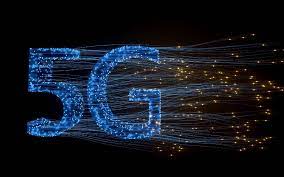LED Flood Lights: Everything You Need to Know Before Buying

LED flood lights changed outdoor lighting forever. They use less power. They last longer. They cost less to run.
Most businesses now use LED flood lights instead of old bulbs. Homeowners are switching too. The reason is simple – they work better and save money.
This guide covers everything you need to know. You’ll learn what makes LED flood lights different. You’ll discover where they work best. You’ll find out how to pick the right ones.
What Are LED Flood Lights
LED flood lights are bright outdoor fixtures. They light up large areas. They use LED technology instead of old bulbs.
The word “flood” tells you how they work. These lights flood an area with bright light. They don’t focus on one small spot. Instead, they spread light across a wide space.
Old flood lights used metal halide bulbs or halogen. Those got very hot. They burned out fast. They wasted electricity.
LED flood lights are different. They stay cool. They last for years. They use much less power.
How LED Flood Lights Work
LEDs are small electronic chips. When electricity passes through, they create light. No glass bulbs. No gas. No filaments that can break.
The light is instant. You flip the switch and get full brightness right away. Old bulbs needed time to warm up.
What makes LED flood lights special:
- Wide beam angles spread light evenly
- No warm-up time needed
- Stay cool during operation
- Work in any weather
- Turn on instantly at full power
- Built tough for outdoor use
- Last 10 to 20 years
- Use 75% less electricity than old lights
Why Switch to LED Flood Lights
Money is the biggest reason people switch. LED flood lights cost less to operate. Much less.
A 100-watt LED flood light gives the same brightness as a 400-watt metal halide. That’s four times less power. Your electric bill drops immediately.
But savings go beyond electricity. You replace bulbs less often. Way less often. Traditional bulbs might last 2,000 hours. LED flood lights run for 50,000 hours or more.
Think about maintenance costs too. Changing bulbs on a 30-foot pole isn’t cheap. You need lifts. You need workers. You need time. With LEDs, you do this once every 10 years instead of every year.
The Real Benefits
Better light quality matters too. LED flood lights show colors accurately. Security cameras get clearer footage. Workers see better. Drivers navigate parking lots more safely.
The environment benefits as well. Less electricity means fewer carbon emissions. No toxic mercury like fluorescent bulbs. Easier disposal when they finally wear out.
Why people choose LED flood lights:
- Cut energy bills by 50% to 75%
- Replace bulbs every 10+ years
- Get better light that shows true colors
- No waiting for lights to warm up
- Works perfectly in freezing weather
- Safer with lower heat output
- Reduces carbon footprint
- Qualifies for utility rebates
- Better for security lighting
- Easier to control and dim
Where to Use LED Flood Lights
LED flood lights work almost anywhere outdoors. Each location has different needs. Understanding these needs helps you pick the right setup.
Commercial Properties
Parking lots need even lighting. Customers want to feel safe. LED flood lights mounted on tall poles cover large areas. Fewer poles mean lower installation costs.
Warehouses use LED flood lights for loading docks. Workers operate forklifts at night. Good lighting prevents accidents. Productivity stays high after dark.
Retail stores light their storefronts. This attracts customers. It also stops crime. Well-lit buildings get broken into less often.
Sports and Recreation
Sports fields need very bright light. Players must see the ball clearly. Fans need to watch the game. LED flood lights on tall poles provide this.
Tennis courts use multiple LED flood lights. They eliminate shadows on the court. Players can track the ball from any position.
Public parks use LED flood lights for safety. Walking trails stay lit after sunset. Families feel comfortable using parks at night.
Home Use
Driveways benefit from LED flood lights. You see clearly when pulling in at night. Motion sensors add security and save energy.
Backyards become usable after dark. Deck lighting extends outdoor living time. Garden lights highlight landscaping features.
Security is a top concern for homeowners. LED flood lights near doors and windows deter break-ins. They activate when motion is detected.
Best places for LED flood lights:
- Parking lots and garages
- Building entrances and exits
- Loading docks and shipping areas
- Sports fields and courts
- Playgrounds and parks
- Driveways and walkways
- Garden and landscape features
- Signs and billboards
- Construction sites
- Storage yards
Picking the Right LED Flood Lights
Not all LED flood lights are the same. Different jobs need different specs. Here’s what matters most.
Brightness and Wattage
Lumens measure brightness. More lumens mean more light. Wattage tells you power consumption.
A 50-watt LED flood light produces about 5,000 to 7,500 lumens. That’s bright enough for a two-car driveway or small yard.
A 150-watt LED flood light creates 15,000 to 22,500 lumens. This works for large parking areas or sports fields.
Don’t just look at watts. Check the lumens per watt ratio. Higher numbers mean better efficiency.
Color Temperature
This changes how the light looks. It’s measured in Kelvin (K).
Warm white (2700K-3000K) looks yellowish. It creates a cozy feeling. Good for homes and restaurants.
Cool white (5000K-6500K) looks bright and clean. It’s similar to daylight. Best for security and work areas.
Most commercial LED flood lights use 5000K. This gives clear visibility without looking too harsh.
Beam Angle
Beam angle determines coverage. Narrow beams focus light on a specific area. Wide beams spread light across larger spaces.
Spot beams (15-30 degrees) work for signs or tall trees. They throw light far but cover a small area.
Flood beams (60-120 degrees) cover wide areas. They’re perfect for parking lots or building walls.
Many projects need both types. Use spots for highlights. Use floods for general coverage.
Weather Protection
All outdoor LED flood lights need weather protection. Look at the IP rating.
IP65 means dust-tight and water-resistant. It handles rain and snow. This is the minimum for outdoor use.
IP66 and IP67 offer more protection. They withstand pressure washing and heavy storms. Choose these for harsh climates.
The housing material matters too. Die-cast aluminum lasts longest. It doesn’t rust. It handles impacts well.
What to look for when buying:
- Lumen output matches your area size
- Color temperature fits your purpose
- Beam angle provides needed coverage
- IP65 rating minimum for outdoors
- Aluminum housing for durability
- Good heat sink design
- Quality brand with reviews
- At least 5-year warranty
- Works with dimmers if needed
- Mounting bracket included
Installing LED Flood Lights
Installation method affects performance. The same light works differently depending on where and how you mount it.
Pole Mounting
Poles work best for large open spaces. They lift LED flood lights high above the ground. This creates wide, even coverage.
Parking lots almost always use pole mounting. One 30-foot pole with four LED flood lights can cover thousands of square feet.
Sports fields need poles too. Multiple poles around the field eliminate shadows. The height keeps light out of players’ eyes.
Pole installation requires planning. Height matters. Too low creates glare. Too high wastes light. Most poles range from 20 to 40 feet tall.
Spacing between poles is critical. A good rule is to space poles three times their height apart. A 30-foot pole should be 90 feet from the next pole.
Wall Mounting
Buildings provide ready-made mounting surfaces. Wall-mounted LED flood lights attach directly to structures. This saves the cost of poles.
Building perimeters use wall mounting for security. Lights near doors and windows deter intruders. They help cameras capture clear footage.
Loading docks need downward-facing lights. Wall mounting above the dock doors works perfectly. Trucks and workers get plenty of light.
Signs look better with wall-mounted LED flood lights. Mount the fixture above or below the sign. Angle it correctly to avoid glare.
Proper aiming makes the difference. Point lights where you need them. Avoid shining into neighbors’ windows. Check local light pollution laws.
Ground Stake Mounting
Ground stakes offer flexibility. You push them into soil and plug them in. Moving them takes minutes.
Landscaping uses ground stake LED flood lights extensively. Highlight trees from below. Light up flower beds. Make water features glow at night.
Temporary events rely on ground stakes. Outdoor weddings, festivals, and parties need portable lighting. Stakes set up fast and pack away easily.
Pathways benefit from low-mounted lights. Ground stakes along walkways improve safety. They guide people without creating harsh overhead glare.
The downside is durability. Ground stake fixtures get hit by lawnmowers. They’re exposed to ground moisture. Choose heavy-duty stakes with thick housing.
Installation tips for LED flood lights:
- Mount poles at proper height for coverage
- Space fixtures to eliminate dark spots
- Angle wall mounts to avoid glare
- Use weatherproof junction boxes
- Hire electricians for pole installations
- Test beam patterns before final mounting
- Make fixtures accessible for cleaning
- Follow local electrical codes
- Consider future maintenance access
- Use quality mounting hardware
Saving Money with LED Flood Lights
The math on LED flood lights is simple. You spend more upfront. You save more over time.
Energy Cost Comparison
Let’s look at real numbers. A traditional 400-watt metal halide fixture uses 456 watts total (including the ballast). Run it 12 hours a day at $0.12 per kWh.
That’s 5.5 kWh per day. Over a year, that’s 2,007 kWh. Your cost is $241 per year per fixture.
A 100-watt LED flood light gives the same brightness. It actually uses about 108 watts with the driver. That’s 1.3 kWh per day.
Annual usage is 473 kWh. Your cost is $57 per year.
You save $184 per year per fixture. If you have 50 lights, you save $9,200 every year.
Maintenance Savings
Traditional bulbs need replacement every 1-2 years. Each change costs money.
Rental of a bucket truck costs $300-500 per day. Labor runs $50-100 per hour. The bulb itself costs $20-50.
Change 50 bulbs and you spend $3,000-5,000 every two years. That’s another $1,500-2,500 per year.
LED flood lights last 50,000 hours. At 12 hours per day, that’s 11 years. You do this maintenance once per decade instead of annually.
Rebates and Incentives
Many power companies offer rebates for LED upgrades. These offset initial costs.
Rebates vary by location and utility. Some pay $30-100 per fixture. Large projects might get custom incentives.
Check your utility website. Look for commercial lighting rebates. The application process is usually simple.
Tax deductions help too. Energy-efficient lighting may qualify for federal tax benefits. Consult your accountant about current programs.
How LED flood lights save money:
- Use 70% less electricity
- Last 10-15 times longer
- Reduce maintenance frequency
- Lower cooling costs in summer
- Qualify for utility rebates
- May provide tax benefits
- Improve safety and reduce liability
- Increase property values
- Support sustainability goals
- Create predictable operating costs
Maintaining LED Flood Lights
LED flood lights need less maintenance than old lights. But they still need some care.
Regular Cleaning
Dust and dirt block light. A dirty lens can reduce brightness by 30%.
Clean LED flood lights twice a year. More often in dusty areas. Use a soft cloth and mild soap.
Don’t spray water directly into vents. Wipe the lens gently. Rinse with clean water. Let it air dry.
Bug buildup happens on warm fixtures. Clean the heat sink fins too. Blocked fins reduce lifespan.
Inspection Schedule
Check fixtures every six months. Look for loose mounting bolts. Tighten them if needed.
Inspect the seal around the lens. Gaps let moisture in. Replace gaskets that look cracked or worn.
Test motion sensors and photocells. Make sure they trigger properly. Clean the sensor lens if readings seem off.
Look at electrical connections. Corrosion causes problems. Clean any green or white buildup you find.
Troubleshooting Common Issues
Flickering usually means a bad driver. The driver is the power supply inside. Most can be replaced without changing the whole fixture.
Dimming over time is normal. All LEDs get slightly dimmer after thousands of hours. It’s gradual and barely noticeable.
Complete failure is rare. If an LED flood light stops working, check the breaker first. Then check connections. Finally, test the driver.
Water damage shows as condensation inside. This means the seal failed. Dry out the fixture and replace the gasket.
Maintenance checklist:
- Clean lenses every 6 months
- Inspect seals and gaskets
- Tighten mounting hardware
- Check electrical connections
- Test sensors and controls
- Remove debris from heat sinks
- Document any issues
- Replace worn parts promptly
- Keep fixtures clear of vegetation
- Schedule professional checks yearly
Conclusion
LED flood lights are the modern solution for outdoor lighting. They use 70-75% less electricity, last 10-20 years, and cost significantly less to maintain than traditional bulbs. Whether for commercial spaces, sports fields, or homes, LED flood lights provide bright, reliable coverage with immediate payback through energy savings. With proper selection, installation, and basic maintenance, LED flood lights deliver superior performance and lasting value.




